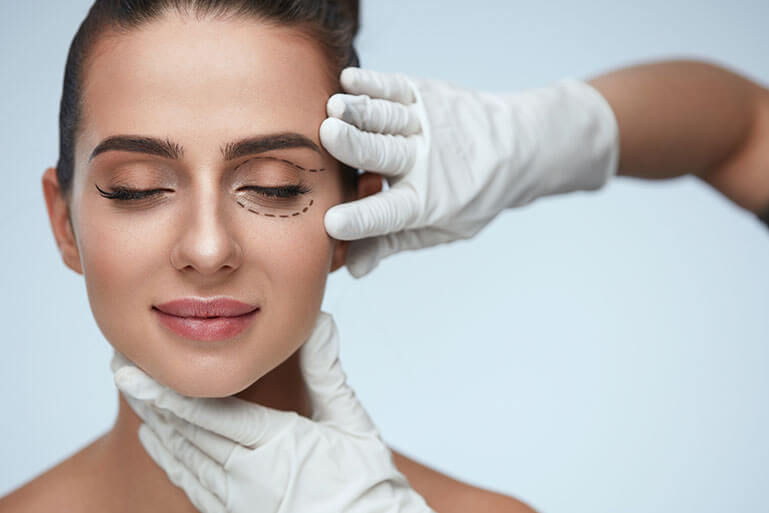
What is Blepharoplasty?
Blepharoplasty (eyelid surgery) is a plastic surgery procedure for correcting sagging or drooping eyelids.

Blepharoplasty (eyelid surgery) is a plastic surgery procedure for correcting sagging or drooping eyelids.
If the eyelids begin sagging into the field of vision, a functional blepharoplasty may be required. The procedure may be covered by medical insurance if it is deemed medically necessary.
A determination of how much vision is affected is done by checking the peripheral visual field with an instrument called the Humphrey Visual Field (HVF) Analyzer.
Blepharoplasty can be performed on either the upper or lower eyelid, or on both, for cosmetic purposes. For a lower eyelid that needs fat rather than skin removed, a transconjunctival blepharoplasty is performed. During transconjunctival blepharoplasty, an incision is made inside the lower eyelid, so there are no visible scars, and the fat is removed. This procedure has no effect on vision, but results in a person’s looking younger and more refreshed.
It is important for a patient to have realistic expectations before undergoing cosmetic blepharoplasty. Although the procedure can enhance appearance and improve self-confidence, it does not radically alter the face.
The best candidates for blepharoplasty are those who are in good overall health, do not smoke, do not have any serious eye conditions, and have healthy facial tissue and muscle.
People with eye disease, including glaucoma or retinal detachment, thyroid disorders, diabetes, cardiovascular disease or high blood pressure are not good candidates for blepharoplasty.
Dr. Carolyn Repke will consult with you to determine your individual needs and the best surgical approach to your eyelids, considering any associated ocular conditions you may have. Having your eyelid surgery performed by an ophthalmologist will assure that the health of your eyes will be our primary concern. To see if you are a candidate for blepharoplasty surgery, call our office for a consultation.
8025 Roosevelt Blvd.
Philadelphia, PA 19152